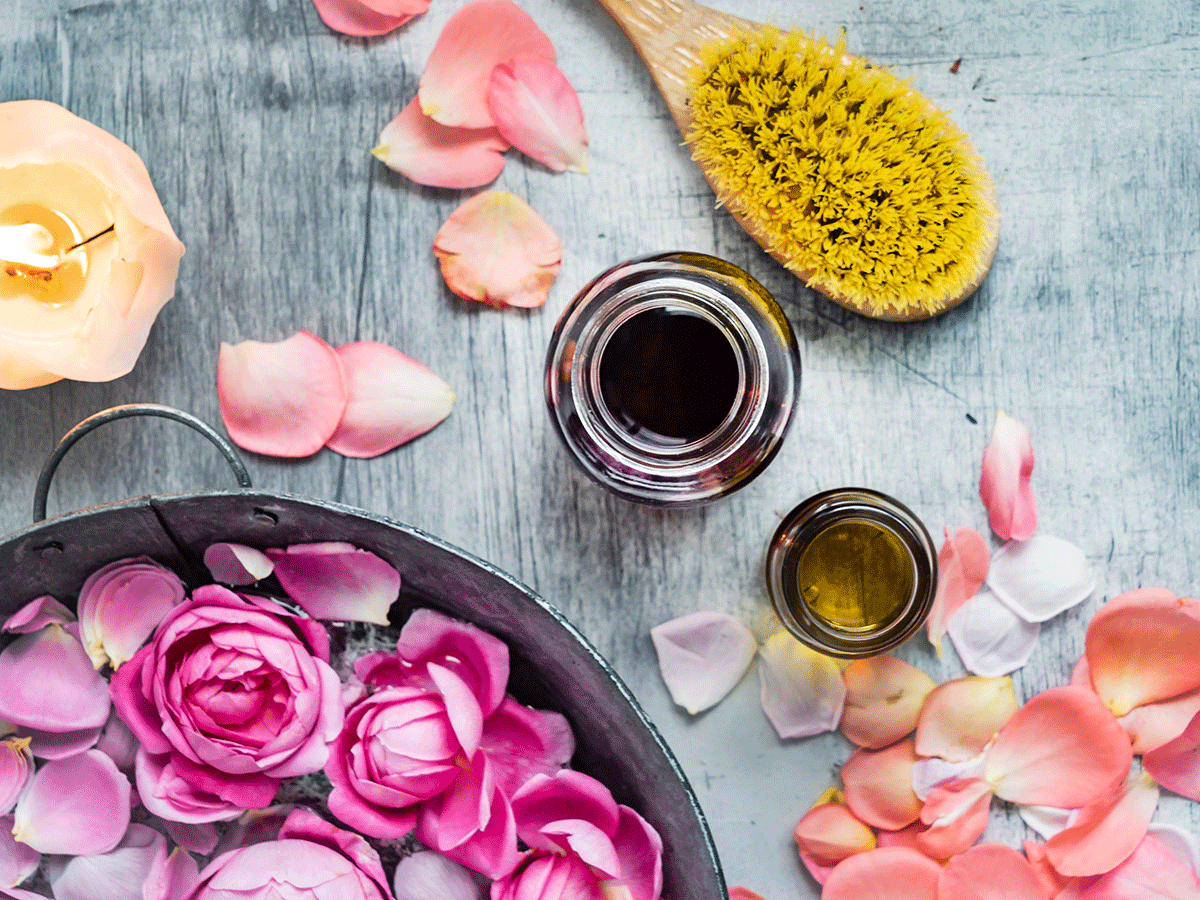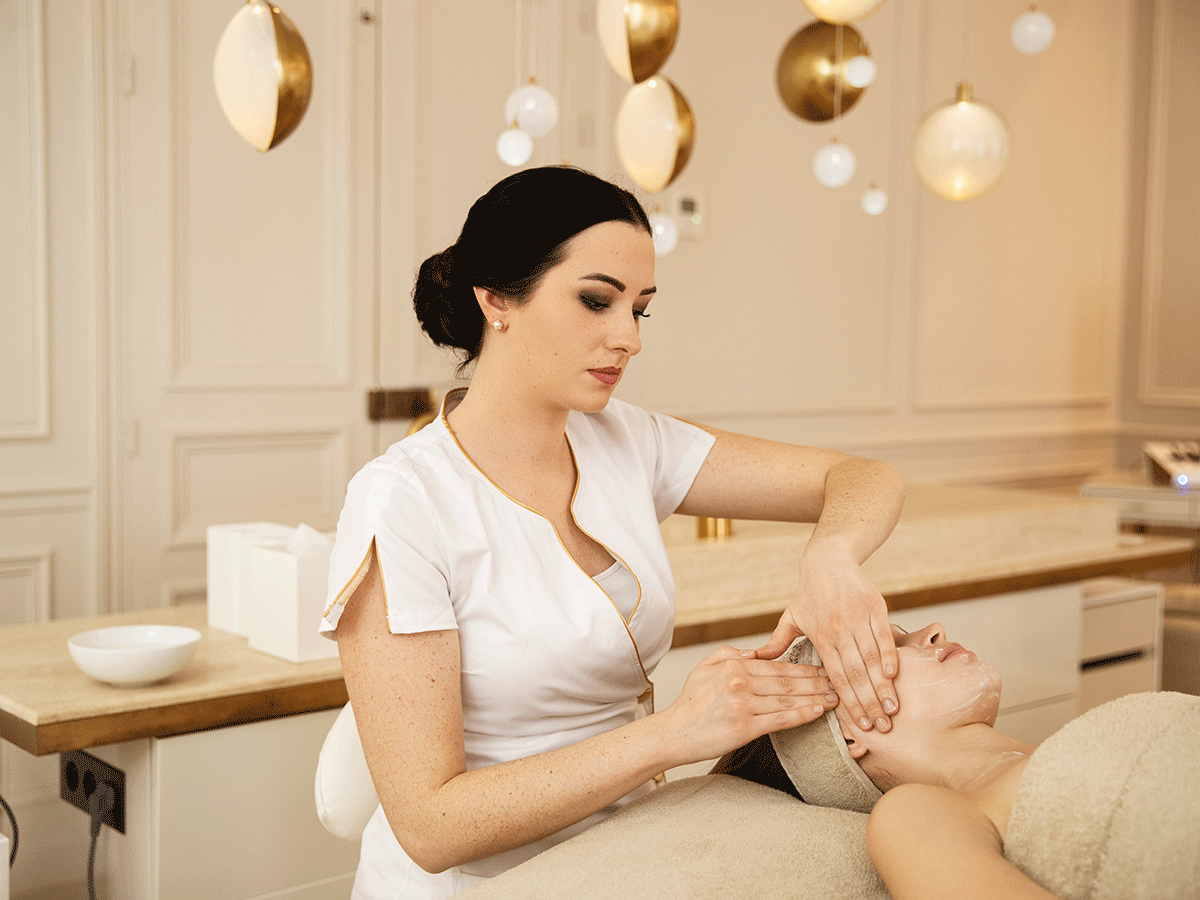The Best Beauty and Wellness Treatments for People with Cancer or in Remission
Cancer patients and survivors deserve a place to de-stress and need trained practitioners to help them feel better—and Wellness for Cancer is making that possible.

These days, it can be especially easy to take beauty and wellness services for granted. We have access to a range of facials, massage therapies, and yoga styles at the tip of our thumb—but for many people, the access to such services stops there. Cancer patients and survivors looking for certain beauty and wellness treatments aren’t able to go just anywhere. They need proper support and specialized care, which is something most spas and wellness centres aren’t trained in. About 80 percent of spas worldwide turn down people affected by cancer—but there’s a charity that’s changing that.
“Spas didn’t want the responsibility or the reliability of cancer,” says Julie Bach, founder of Wellness for Cancer. The organization trains professionals at spas and wellness centres on the needs of cancer patients and survivors. Julie and her team consult with cancer centres, oncology specialists, integrative medicine experts, and wellness specialists to establish treatments—including facials, massages, and yoga. Then they teach spa and wellness professionals how to perform them safely. Thanks to Wellness for Cancer, people affected by cancer are able to get specialized care for their body, mind, and spirit that can help them de-stress and feel better.
I chatted with Julie to learn about the spas she trains, benefits of the treatments, and feel-good practices that can be done at home.
What makes Wellness for Cancer massages safe for cancer patients and survivors?
We train spas and wellness centres on facial and body treatments that are adapted to the needs of cancer patients and those in remission. We focus on a few parametres—site, pressure, position, and product—to determine if a restriction or adaptation to the treatment has to be made. Maybe a person just had surgery, had a port put in, has a skin rash, or has an open wound, and so we have to avoid an area or adapt the treatment accordingly.
For example, if a client’s had lymph nodes removed or radiated, the way in which we massage the décolleté, neck, and face changes. This is because there’s a chance of lymphedema—the swelling or possibility of swelling in the area where lymph fluid is backed up. We want to make sure that if we’re massaging the décolleté and lymph nodes have been removed under the left breast, we massage not towards the left breast but away from it.
Some of the spas and wellness centres you train offer cult-favourite Biologique Recherche (BR) facials. What makes BR facials safe for cancer patients and survivors?
Wellness for Cancer has helped Biologique Recherche identify which products and massage gestures are appropriate for facials based on surgeries, lymph node removal, radiation, chemo, and other treatments. Our facial has a lot of the similar strokes to the original [Editor’s note: BR facials are known for their lymphatic drainage massage techniques.] but is a more slowed-down version. We still move the muscle and do many of the movements, but it’s not as rigorous. Everything is tailored to the skin in the present moment.

BR offers some of the best skin-care products out there (hello, P50!), but some of them are quite potent and not recommended for everyone. Are there some products you don’t recommend using on clients?
We took out all the active products. When someone is in treatment, there’s no P50, Masque Vivant, or Biomagic. BR’s research and development team, marketing team, and training team, and doctors consult with us to consider the best products for everyone. We look at the pH level of the products, the ingredients, and anything someone could have a reaction to. There are over 100 products from BR for us to use. With those, we can create hyperpersonalized facials based on the client’s needs and what they’re going through, such as radiation or hormone therapy. The products we use calm and hydrate the skin to help repair the epidermal barrier, which becomes highly dysfunctional for many who are in treatment.
What are the benefits of the treatments?
The psychological effect of the changes on the skin and the changes on the body are the most devastating effect of cancer treatments, leading to low perceived body image and self-esteem. Perceived body image is based on our thoughts and beliefs about how we look or should look. How one feels about how they look is invaluable to their self-esteem—and our treatments, particularly our facials, can help with that. All our treatments promote relaxation and help release oxytocin and serotonin, which assist in getting a better night’s sleep. Our massage and yoga offerings increase mobility and help the nervous system. And then there are the interpersonal benefits. Making friends at the spas and wellness centres is very beneficial to one’s mental wellbeing.
Do spa professionals teach their clients how to care for their skin, body, and mind at home?
Clients are taught home self-care practices around reconnecting with their skin and body through a daily routine. The BR product regimen is highly tailored to the client’s skin to help repair, calm, and hydrate. For yoga, all teachers understand the value of a home practice whether it is for breathing, balance, flexibility, or union with the divine. What we do every day is more important than one class per week.
Which spas and wellness centres have you and your team trained?
Six Senses, which is a premium global brand, has properties in Thailand, Cambodia, Vietnam—all over the world—and we’ve trained about half their properties so far. We’ve also trained Accor Fairmont, which has 19 properties in Canada, US and Central America, and Sandals Resorts, which were turning away 50 people per month who reported that they had cancer. There will be a directory with a list of all the spas and wellness centres we’ve trained on the website soon.
What can cancer patients and survivors do at home to take care of themselves mentally, physically, and spiritually?
There are a few things that are good for all of us:
Restorative yoga: It’s a great way to relax the body and go deeper within. It is very healing for the mind-body connection.
Exercise: It can improve the quality of life during treatments and help in prevention after treatments.
Sleep: Eighty percent of cancer patients report issues with their sleep. Sleep is when the body restores itself. Many of our biological processes are linked to our circadian rhythms, and lack of sleep can impact mental wellness and fatigue.
Meditate: It’s extremely beneficial for learning to stay in the present moment instead of thinking about the past (“I wish I had”) and the future (“I wish I could”). The only moment we have is the present moment, and even a future moment is disguised as the present moment. Meditation helps us learn where the mind wanders and our own patterns that create additional mental suffering based on our thoughts. Meditation is very helpful when we learn to observe our thoughts dispassionately without being reactive and learning how to let go of how we want things to be. Meditation is a great tool for empowering us to be in control during the process.
Practicing Gratitude: It can help shift us out of any depressive or anxious state. Learning to be appreciative of what we have been given at the grace of others is transformative.
June 26 is National Cancer Wellness Awareness Day—what’s something you’d like to bring awareness to?
The wellness modalities that we use on the prevention side—taking care of ourselves, exercising, sleeping, deep breathing, breath work—are even more relevant when someone is going through their treatment. Let’s encourage people to sleep more, move more, eat better, and just reconnect with their body.
This interview has been edited and condensed.




